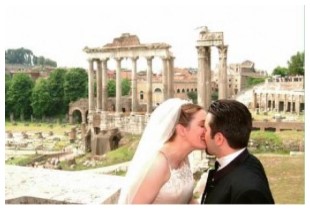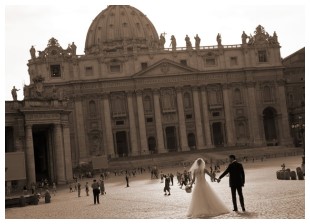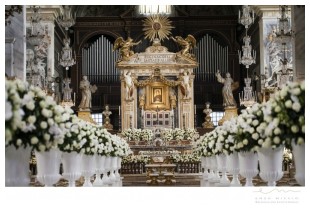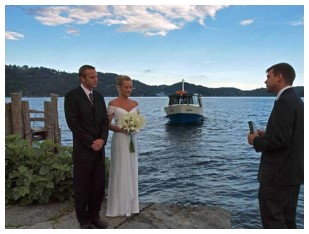Wouldn’t getting married in Italy be so romantic?! Short answer…yes. Long answer…yessss, after some time, lots of paperwork and some expense!
Here we’ll tell you what US citizens need to know about getting married in Italy. We’ll also speculate on what type of wedding Kim Kardashian and Kanye West had recently.
There are three basic types of ceremonies for an Italian wedding: a civil ceremony, a Catholic ceremony and a symbolic ceremony. What’s the difference? A civil or Catholic ceremony is legally binding worldwide. A symbolic ceremony is not legally binding and can be performed just about anywhere, except inside a city hall or a consecrated church.
*The steps required to have a civil ceremony are:
- Bring a valid U.S. passport.
- Provide original or certified copies of your birth certificates.
- Produce evidence of the termination of any previous marriage(s), if applicable.
- Present an affidavit sworn to before an American consular officer commissioned in Italy, stating that there is no legal reason you can’t marry, according to the laws of your state of residence. This must be done in Italy. This affidavit is valid for six months and costs about $50. This must be brought to the local Italian county office, along with a 16 euro revenue stamp.
- Obtain an Atto Notorio which is another declaration stating that according to the laws of your home state that there is no obstacle to your marriage. This declaration is sworn to by two adult witnesses that are not family members or future family members before an Italian consul inside Italy or outside Italy.
Now that you have all of these documents together, you present them to the Marriage Office of the town hall in the city where the marriage will be performed, and make a “Declaration of Intention to Marry” before a civil registrar. When all this is completed, you can finally set the date of the wedding. Phew!
Civil declarations must be posted at the town hall for two consecutive weeks, including two Sundays, before the marriage can take place. If neither party to the marriage is an Italian citizen or a resident of Italy, declarations are automatically waived or posted for a shorter period of time which may vary from one day to a week depending on the town hall regulations.
Your civil ceremony would be performed by the mayor or one of his deputies in the City Hall. If this doesn’t sound appealing, remember you’ll be in Italy, where most City Halls are located in historic buildings and beautifully decorated with paintings and frescoes. In a few special cases, some villas have been given permission to host civil weddings.
This long list of requirements can seem daunting, but with the help of a professional, you should only need to be in Italy for about three days prior to your wedding to take care of all the necessary paperwork. Plan ahead though, because your professional will need at least a month’s notice for a civil ceremony to book all of the necessary appointments.
A Catholic ceremony would be performed in a Catholic church. Religious ceremonies are only considered valid if performed by a Roman Catholic priest. The priest will register the marriage with the civil authorities. The Roman Catholic Church requires baptismal and confirmation certificates in addition to the documents listed above. For complete information, you should check with your priest.
If you want a religious ceremony other than Catholic, this requires that a civil ceremony be performed prior to the religious one to ensure the legality of the marriage.
A symbolic ceremony is the easiest to arrange. It will not be legally binding, so another legal ceremony will need to take place back home. A symbolic ceremony can take place anywhere that fits your desires, such as in a beautiful garden, an historic villa, overlooking the Tuscan countryside, in a vineyard or an unconsecrated chapel at a private villa or hotel. This would also be a beautiful way to renew your vows in a very meaningful way.
Kimye got married in 16th century Forte di Belvedere, overlooking the historic city of Florence, Italy. They were married by a Protestant pastor from Miami, FL. Since a protestant ceremony is not legally binding and this castle is not normally authorized to hold weddings, it’s highly likely that this was not a legal ceremony. The famous couple probably took care of the legalities in the US, prior to leaving for Italy and continuing on to the honeymoon in Ireland. Or, they had a civil ceremony in Florence prior to the wedding.
If you would like to get started planning your own wedding or renewal of vows in Italy, please click here to schedule a complimentary wedding planning session. I look forward to speaking with you soon!
For complete details on getting married in Italy, please visit the Italian Embassy website.
















